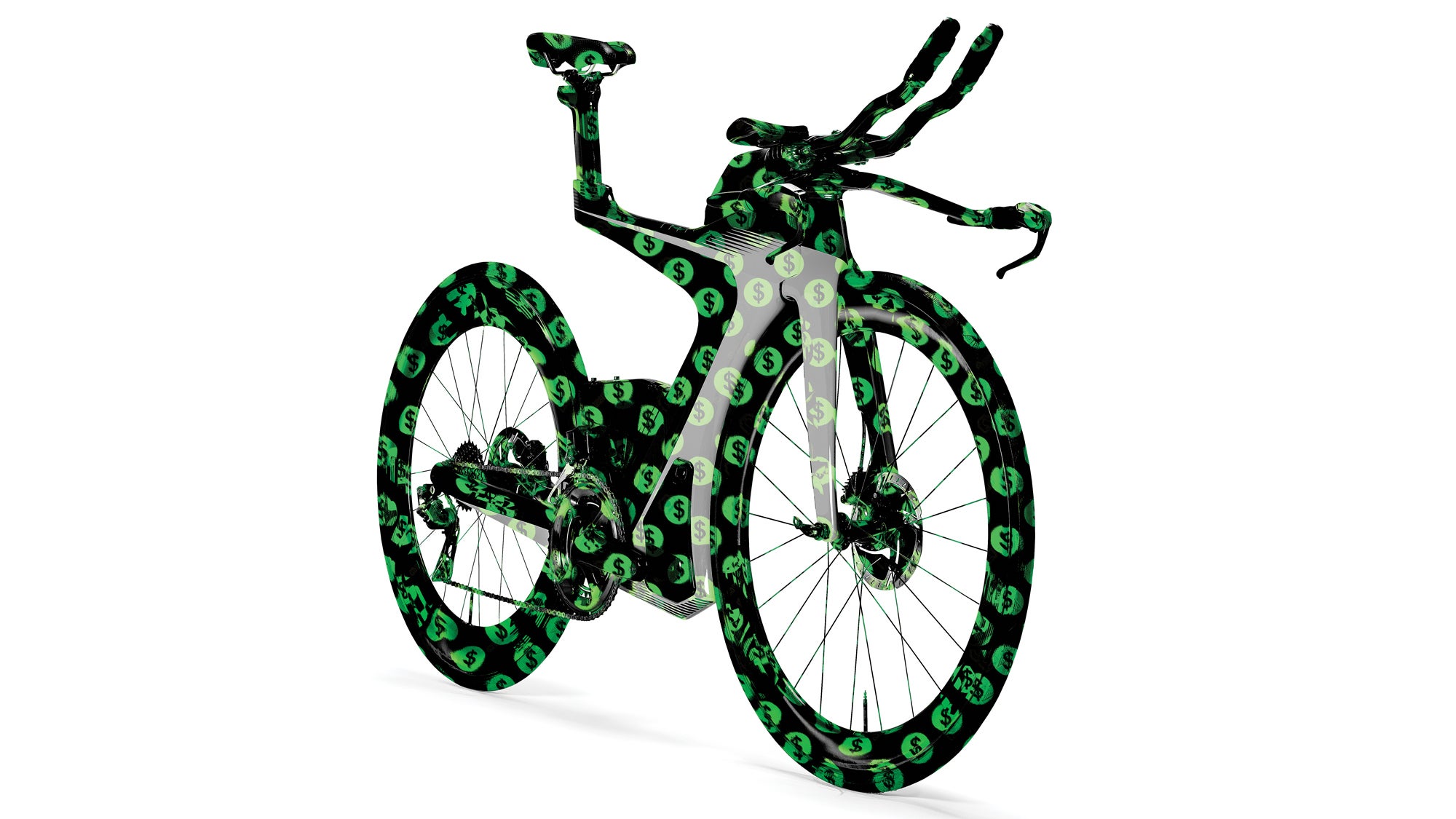The Sunrise and Sunset of Triathlon's Superbike

Photo: Brad Kaminski
The average price of a triathlon bike has risen $1,500 over the past eight years. While that might sound like good news for the collective triathlon economy, it’s actually a SOS signal that the industry made a pivotal misstep a few years back.
The $1,500 increase is according to bicycle search engine 99 Spokes, which calculated the median retail price of hundreds of tri bikes from dozens of brands. That means tri bikes have gotten significantly more expensive—but at the same time, the triathlon public has been looking to spend significantly less. While there isn’t concrete sales data on what the average triathlete paid for a bike over the past eight years, every retailer and manufacturer on earth will tell you it didn’t increase by $1,500.
Tri bike brands spent millions developing ultra-aero rocket ships that 90% of triathletes or prospective triathletes could never ride or afford. They’ve been declared “superbikes,” but what makes these rigs different from mid-tier and entry-level options is actually more marginal than you’d expect, and the cost often comes down to factors that are far outside of the realm of raw speed.
Changing Demographic
“The growth in triathlon is coming from women—especially young women—and they’re smarter with their money.”
That’s according to Argon 18 Regional Director Dominique Fortin, who has been marketing, selling, and fitting bikes to triathletes for the past 15 years. There was a time when the average newbie triathlete was a 40-something guy looking for the most state-of-the-art bike machine that money could buy, but Fortin has seen that trend come and go.
“The women we’re seeing coming into the sport now buy the $2,000 bike instead of the $5,000 bike,” he says. “Then they get a coach and a power meter and everything else to get the most out of their triathlon experience. They buy the sport—the whole package.”
Women currently make up 39% of USA Triathlon’s membership, which is high relative to other national federations. It’s not uncommon for Ironman events outside of North America to have more than 80% men.
“The triathlon industry has not been nearly as adaptive or dynamic as its consumers have,” says Tom Demerley, who has spent more than 30 years in the triathlon industry doing everything from retail to marketing to media. “The industry has produced a culture of high-dollar, ‘white elephant’ bikes that have drained development and marketing dollars and returned little tangible profit for retailers by soaking up inventory budgets.”
So the manufacturers have used up resources to build bikes that are given away to pros or can only be sold at a deep discount by retailers. It’s not a good formula for a healthy industry, but there may be a light at the end of the tunnel.
Superbike Trickle-Down Tech
While the merits of trickle-down economics are a debate for another magazine, there is a definite trickle-down effect when it comes to things that go fast. Mercedes-Benz has spent billions of dollars perfecting their Formula 1 cars, which no one will ever buy and only two people drive each year. But developing those cars makes your boss’s Mercedes all that much better, and tri bike tech trickles down in much the same way.
You may never get to ride the exact same Cervélo P5 as Ben Hoffman or Specialized Shiv as Lucy Charles-Barclay—and they probably wouldn’t be the best bikes for you anyway—but the next bike you buy will be better and faster because of everything learned in developing those superbikes.
“One of the most successful bikes for us over the past five years has been the Felt IA line,” says Cid Cardosa Jr., who has owned and operated InsideOut Sports in Cary, North Carolina, for 26 years. “A customer can spend as little as $2,800 and get a bike that looks and performs very much like the one Daniela Ryf rides in Kona. That makes the athlete feel good about their purchase.”
That sub-$3,000 price range is where most new triathletes are comfortable, and veteran triathletes aren’t upgrading their bikes as quickly as they bought their old ones. That leaves a lot of expensive bikes taking up shop inventory or sitting in warehouses and factories.
For shop owners like Cardosa, one of the biggest frustrations is manufacturers want them to stock their top-of-the-line superbikes, which are impossible to fit to most customers and way out of their price range. The P5X may work for a super-flexible 25-year-old, but that’s not someone who is going to spend five figures on a bike. And it’s not the right fit for the 47-year-old with back pain who might have the expendable income.
It’s unlikely we’ll see another $1,500 increase in the average tri bike price over the next eight years because the market isn’t there to support it. If the sport is going to attract new athletes, manufacturers need to provide customers and retailers with more affordable options. For athletes looking to upgrade or newbies with deeper pockets, the focus needs to be on adjustability, upgradeability and value—all while looking and feeling very much like a five-figure superbike.
As Cardosa puts it: “Everyone wants to feel like they bought a race car, but they have to be able to actually drive it.”